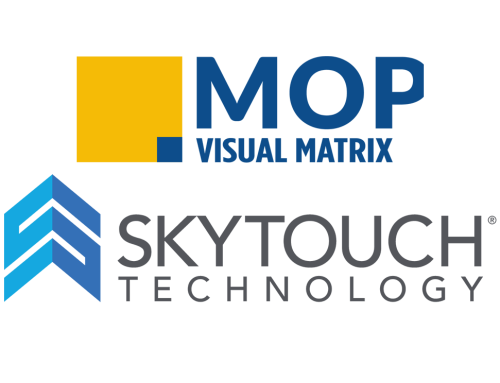Diane Bowen, Director of Services, SkyTouch Technology
Let me start out with what I find to be a startling fact: According to the Bureau of Labor Statistics, the average turnover rate for the hospitality industry in 2014 was 66.3%. Considering that the national average for all other private industries was 44.4%, this is an alarming and expensive statistic. For every time you lose someone, you will likely have to conduct more interviews, complete more employee onboarding, work (and pay for) over-time to cover open shifts, not to mention deal with the lowered morale high turnover creates.
Folks often believe one of the top reasons people leave their job is pay. Well, let’s be honest. The hospitality industry is not overly lucrative for the large majority of people who have chosen its path. But the truth is though, as it is for many industries, that most people leave their roles because they are not fully engaged and do not feel valued. So, how do we retain good people and help stem the tide of turnover? What does it take? Allow me to tell you a story about two particular hotels and how I learned that the answer to this question can be summed up in one word—planning.
A Tale of Two Hotels
Earlier in my career, I was a training and installation specialist responsible for onboarding newly-franchised properties with their new property management systems (PMS). I estimate that I have installed 250+ properties or so in the span of about eight years. Several years ago, I was completing back to back installations in a small town that was really starting to grow.
With the first hotel, the GM was very thoughtful about the scheduling and onboarding coordination. This GM had shared with me her schedule and curriculum of training that would occur outside of the PMS training, and asked for opportunities for me to include their customer service language and procedures into my reservation and check-in scenarios. Brilliant. I quickly produced my guide and together, we identified the areas where I could call upon their customer service skills as they were completing my scenarios. On the first day of training, everyone was prepared, knew what their shift would be, and had been trained on some of the other tools and equipment that would be used in their day-to-day roles. They were so eager and engaged, we moved training to the front office and everyone took turns at being a guest and leading a scenario. Midway through, the GM showed up with lunch for everyone so we could take a quick break and then keep on plugging away. At the end of each day the GM would check-in with her team to track their progress, answer questions, and set the stage for the next day. Needless to say, the installation was successful! The staff was confident and performing well because they understood what was expected of them, they knew how to operate front office equipment, and they felt like they were part of a team—they felt valued.
With the second hotel, the installation was actually heartbreaking. I remember standing behind the front desk in this newly built, beautiful hotel lobby, reviewing the area to map out installation of the equipment. When it came to training employees, the owner’s approach was not planning, but more like trial by fire. If you survived, fine. If not, well, there’s the door. Members of the staff did not understand what shift they would be working, as nothing was agreed upon in advance. So, when one individual found out they were slated to work the night audit shift, he was forced to quit because he had a child that could not be left alone at night. Not surprisingly, the result was a revolving door. When the owner realized he was expected to pay wages for the time staff members were in training with me, I was informed I could have them for four hours, and not a minute more. Not surprisingly, the day this hotel opened was a very chaotic one. The staff had received no real training, did not understand their roles, did not understand how to even use the key machine, and were understandably stressed. It was apparent to anyone watching this that they did not feel valued. By the end of my visit, three of the five people I trained had quit. The owner had set his staff up to fail long before I’d even arrived.
Doing the Math
I was so intrigued by the extreme differences of these two installations that I decided to track their internal scores for a few months and see what happened. As anticipated, customer service scores for the first property were outstanding. The room rates, occupancy, and ultimately revenues were impressive. For the second property, the service scores were moderate, and revenues were approximately 40% less than the alternate location.
While it doesn’t necessarily take a rocket scientist to figure out why one hotel was more successful than the other, I wondered if there was one specific item that made more of a difference than another. Was it simply making sure folks were trained? Was it creating an engaging culture that makes people feel they are building an actual career while being valued? Was it having a strong leader who embraced both culture and training? I decided that while all of these are important, the one common denominator to all of it was planning.
Steps to Success
To help drive a successful outcome, you need a plan. The GM of the first property had strategically planned how the opening of their hotel would occur, including how and what the staff would need to know to be successful in their roles. At SkyTouch, I have incorporated this experience into how we onboard new employees into our own Customer Services Team. Even though this is what I use for my people, this framework can work equally well for a hotel staff. Here are some basic questions to ask yourself:
What systems does this role need to access and be able to use?
What training/certifications are needed for this role?
What processes will this role need to be aware of?
What does each day of the 1st week look like?
What are the 60-day objectives for this role?
What are the yearly objectives for this role?
Some of you may look at this and think, “I don’t have formal training pieces pulled together,” or “I don’t have all of my processes documented.” Don’t panic! You can build an onboarding plan for a role first and work outwards to the long-term objectives. While I highly recommend getting processes documented and eventually putting together some type of formal training, don’t let what you may be lacking right now stop you from starting. You may be able to have someone shadow how to use tools and share processes, then have the new team member document as they are trained and provide that documentation back to you. The point is to start. Because as I learned long ago, it will only happen if you actively plan to make it happen.




